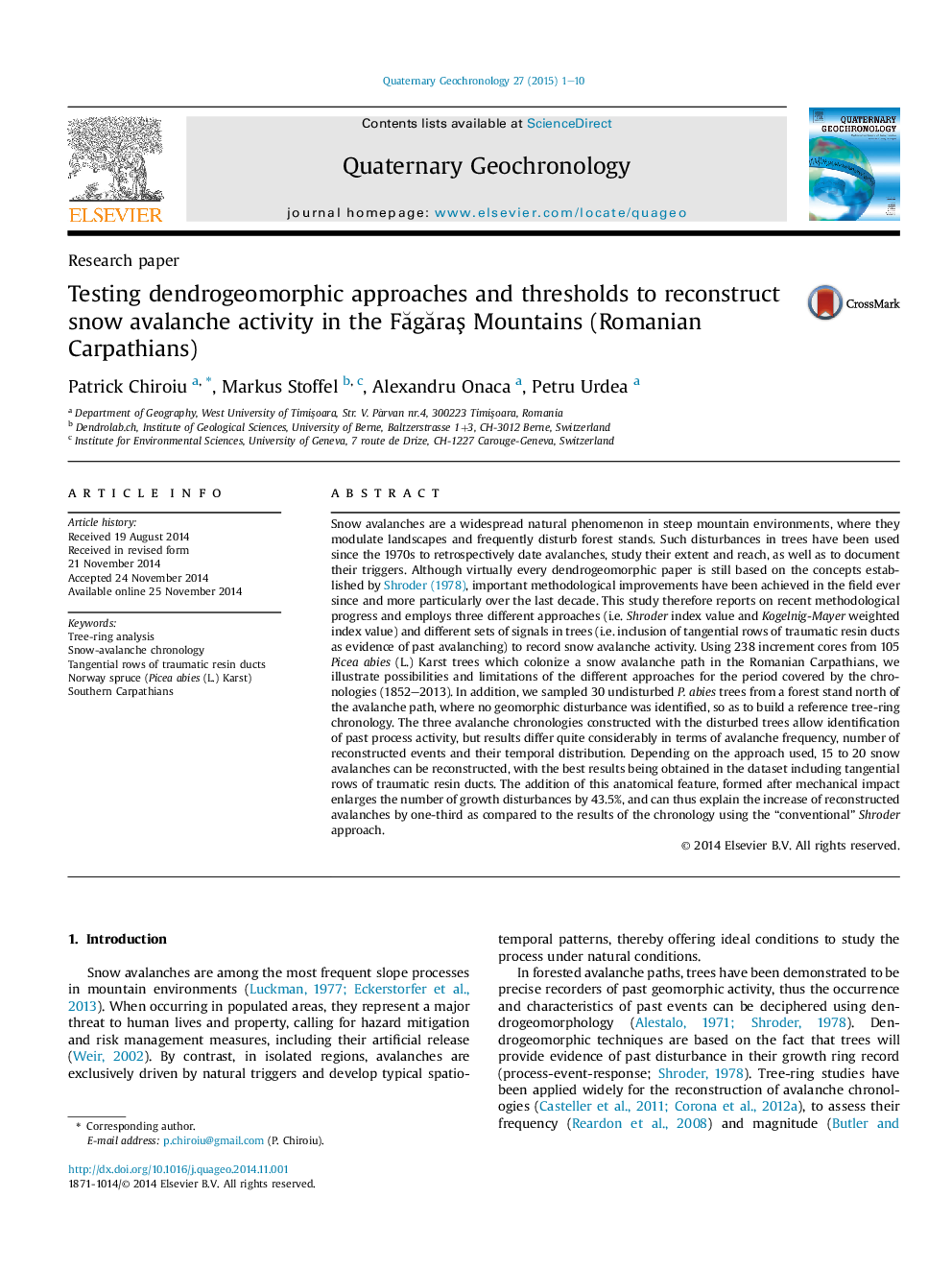| کد مقاله | کد نشریه | سال انتشار | مقاله انگلیسی | نسخه تمام متن |
|---|---|---|---|---|
| 4724924 | 1639849 | 2015 | 10 صفحه PDF | دانلود رایگان |

• Tree rings were used to develop the first snow avalanche chronology in the Făgăraş Mountains (Romania).
• Different methodological approaches yield different chronologies and thus different return periods.
• The number of reconstructed events varies between 15 and 20 for the period 1852–2013.
• Tangential rows of traumatic resin ducts are essential for snow avalanche reconstructions.
Snow avalanches are a widespread natural phenomenon in steep mountain environments, where they modulate landscapes and frequently disturb forest stands. Such disturbances in trees have been used since the 1970s to retrospectively date avalanches, study their extent and reach, as well as to document their triggers. Although virtually every dendrogeomorphic paper is still based on the concepts established by Shroder (1978), important methodological improvements have been achieved in the field ever since and more particularly over the last decade. This study therefore reports on recent methodological progress and employs three different approaches (i.e. Shroder index value and Kogelnig-Mayer weighted index value) and different sets of signals in trees (i.e. inclusion of tangential rows of traumatic resin ducts as evidence of past avalanching) to record snow avalanche activity. Using 238 increment cores from 105 Picea abies (L.) Karst trees which colonize a snow avalanche path in the Romanian Carpathians, we illustrate possibilities and limitations of the different approaches for the period covered by the chronologies (1852–2013). In addition, we sampled 30 undisturbed P. abies trees from a forest stand north of the avalanche path, where no geomorphic disturbance was identified, so as to build a reference tree-ring chronology. The three avalanche chronologies constructed with the disturbed trees allow identification of past process activity, but results differ quite considerably in terms of avalanche frequency, number of reconstructed events and their temporal distribution. Depending on the approach used, 15 to 20 snow avalanches can be reconstructed, with the best results being obtained in the dataset including tangential rows of traumatic resin ducts. The addition of this anatomical feature, formed after mechanical impact enlarges the number of growth disturbances by 43.5%, and can thus explain the increase of reconstructed avalanches by one-third as compared to the results of the chronology using the “conventional” Shroder approach.
Journal: Quaternary Geochronology - Volume 27, April 2015, Pages 1–10